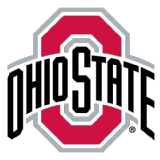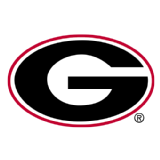Tyson Chandler

Team: Phoenix Suns
Contract: Four years, $52 million
Brandon Knight

Team: Suns (re-signed)
Contract: Four years, $70 million
What it means: After coming to terms with the restricted Knight, the Suns turned their attention elsewhere to sign Chandler away from a variety of other suitors. A four-year contract for Chandler is a slight concern, given his injury history and age (36 by contract's end). Those factors are mitigated by Chandler going from one highly regarded athletic training staff to another. If Chandler is going to be healthy and productive anywhere, it's Phoenix.
What's next: While signing Chandler used up basically all of the Suns' cap space, they still immediately went into a meeting with Aldridge pitching the idea of playing the two free agents together. To clear space, Phoenix would probably need to move both Morris twins, along with some other salaries. Young center Alex Len could be expendable with the addition of Chandler, though Phoenix may be viewing Len as insurance should Chandler's health be an issue.
Paul Millsap

Team: Atlanta Hawks (re-signed)
Contract: Three years, $59 million
What it means: After losing Carroll, the Hawks ensured the return of one of their starting forwards by re-signing Millsap late in the day. Previously, their offer to the two-time All-Star had been reported at four years and $80 million. A three-year deal should work somewhat better for Atlanta, since it limits the small potential risk of Millsap declining significantly by his mid-30s. I project his value at $73 million over the life of this contract.
What's next: Having re-signed Millsap and traded for center Tiago Splitter from the San Antonio Spurs, the Hawks are now out of cap space. That leaves them with only their $2.8 million room exception to chase a Carroll replacement.
Goran Dragic

Team: Miami Heat (re-signed)
Contract: Five years, $90 million
What it means: Having given up two first-round picks for Dragic at the trade deadline, there was never really much chance of Miami letting him go. They stepped up with a larger offer than any other team could have made Dragic, keeping him in the fold. This deal might be a slight overpay. I project Dragic's value at $51 million over the next three years, and it's unlikely he'll still be worth $20 million a year by the final season of the contract, when he'll be 34.
What's next: The Heat will continue negotiating with their other starting guard, Dwyane Wade.
Brook Lopez

Team: Brooklyn Nets (re-signed)
Contract: Three years, $60 million
Thaddeus Young

Team: Nets (re-signed)
Contract: Four years, $50 million
What it means: The Nets were the first of many teams to bring back their starting lineups intact, quickly agreeing on new contracts with their frontcourt of Young and Lopez that spurred a playoff run after Young's acquisition at the trade deadline. Those results aside, there's reason to worry about both deals. Lopez didn't crack my top 30 in value because of his poor RPM and injury history. If he stays healthy, he should justify a max salary, but if his foot is problematic again this contract could be a rare overpay. And $50 million over four years is just past the edge of Young's value, which I project at $34 million over the next three.
What's next: A couple of members of Brooklyn's second unit, Alan Anderson and Mirza Teletovic, are restricted free agents. The Nets will have to weigh their value against the cost of leaping far over the luxury tax. Brooklyn already has about $93 million committed to 10 players under guaranteed contract, putting the Nets over the tax line. They might be able to trim that bill by trading Joe Johnson in the final season of his massive contract.
Khris Middleton

Team: Milwaukee Bucks (re-signed)
Contract: Five years, $70 million
What it means: The Bucks headed off the possibility of a lucrative offer sheet for Middleton, a restricted free agent, with a five-year offer that should age well. Because of Middleton's terrific RPM, I project his value at more than $60 million over the next three seasons.
What's next: Agreeing with Middleton early and delaying his signing allows Milwaukee to utilize its full $16 million or so in cap room. The Bucks reportedly met with center Robin Lopez on Wednesday as they look to fill their need in the middle.
Paul Pierce

Team: Los Angeles Clippers
Contract: Three years, $10.6 million
What it means: The Clippers secured one of the day's best bargains by convincing Pierce to pass up the chance to make $6-plus million with the Washington Wizards next season to return home for a deal starting at $3.4 million (the taxpayer mid-level exception). I project Pierce's value at more than $30 million over the next three seasons, and he'll make about a third of that in that span. That's a huge break for a Clippers team that needed one given its precarious cap position.
What's next: Adding Pierce may help the Clippers sell DeAndre Jordan on the idea of returning to L.A. as an unrestricted free agent. If Jordan leaves, the Clippers will have few good ways to replace him. But if Jordan does re-sign, the Clippers will remain in the mix for the Western Conference title.
Al-Farouq Aminu

Team: Portland Trail Blazers
Contract: Four years, $30 million
What it means: This deal, the first agreed to by a free agent to join a new team, was a little tough to accept at first. After all, Aminu played for the veteran's minimum last season and averaged just 5.6 points per game in Dallas. However, Aminu's strong RPM is a clue toward his value as a wing defender and an undersized power forward. I project him as worth $34 million over just the next three seasons, making this deal a strong one. The Blazers probably see Aminu more as a small forward after trading Nicolas Batum for 4-manNoah Vonleh last week. In that case, he could certainly stand to improve his outside shooting.
What's next: Assuming veterans Aldridge, Lopez and Matthews all head elsewhere -- a safe one at this point -- Portland will still have more than $30 million in cap space to pursue other free agents who fit with the team's timetable. The Blazers have quickly amassed a core of players in their early- to mid-20s, including Aminu (25 in September).
Brandan Wright

Team: Memphis Grizzlies
Contract: Three years, $17 million
What it means: The Grizzlies replaced backup center Kosta Koufos, an unrestricted free agent, with Wright. The high-percentage finisher gives Memphis a very different look in its frontcourt. Like Koufos, he could potentially play with both of Memphis' starters up front, Marc Gasol -- assuming he re-signs -- and Zach Randolph. He's a solid value at this price (I project his production as worth $27 million over the next three years).
What's next: All indications are a new contract for Gasol will be completed quickly, in which case the heaviest lifting of Memphis' offseason is already over. The Grizzlies likely will stay active in the trade market for a wing upgrade, but using the non-taxpayer mid-level to sign Wright does subject them to the hard cap $4 million greater than the luxury-tax line. That shouldn't be a major issue, as Memphis could still spend about $8 million more if the cap falls at $68 million.
Kyle Singler

Team: Oklahoma City Thunder (re-signed)
Contract: Five years, $25 million
What it means: It's tough to overpay with the cap escalating so quickly, but the Thunder might have managed to do so. I project Singler's value at less than $9 million total over the next three seasons. He hasn't been far above replacement level over the course of his career, and the rising cap doesn't change the value of a replacement-level player. If Singler plays more like 2013-14, when he posted an impressive .574 true shooting percentage, he'll be worth this deal. Last year's below-average .512 true shooting (.461 in Oklahoma City) won't cut it.
What's next: The Thunder still have to deal with the other restricted free agent they added at the deadline, center Enes Kanter. Oklahoma City is already almost at the luxury-tax line, and re-signing Kanter will surely push them deep into the tax. The Thunder could look to move reserves Perry Jones and Steve Novak to cut their bill.
Alexis Ajinca

Team: New Orleans Pelicans (re-signed)
Contract: Four years, $20 million
What it means: Ajinca was a bargain backup center for the Pelicans the past two seasons in his second NBA stint, with a return to France in between. He'll still be effective but no longer a bargain after agreeing to a new contract. In the context of the rising cap, Ajinca will be making less than the mid-level exception, which isn't so bad for a backup center. The big concern to me is whether New Orleans should be playing (or paying) two traditional centers when their best option at center is Anthony Davis. ESPN's Marc Stein reported Wednesday night that the Pelicans agreed to a five-year deal with starting center Omer Asik. The annual salary isn't terrible, especially since Stein reported that the final season of Asik's contract (when he'll be 33) is non-guaranteed.
What's next: Bringing back Asik ensures New Orleans plays this summer over the cap, giving the Pelicans the non-taxpayer mid-level exception ($5.5 million) to add to their roster. The Pelicans will also likely look to re-sign restricted free agent Norris Cole.

Team: Phoenix Suns
Contract: Four years, $52 million
Brandon Knight

Team: Suns (re-signed)
Contract: Four years, $70 million
What it means: After coming to terms with the restricted Knight, the Suns turned their attention elsewhere to sign Chandler away from a variety of other suitors. A four-year contract for Chandler is a slight concern, given his injury history and age (36 by contract's end). Those factors are mitigated by Chandler going from one highly regarded athletic training staff to another. If Chandler is going to be healthy and productive anywhere, it's Phoenix.
What's next: While signing Chandler used up basically all of the Suns' cap space, they still immediately went into a meeting with Aldridge pitching the idea of playing the two free agents together. To clear space, Phoenix would probably need to move both Morris twins, along with some other salaries. Young center Alex Len could be expendable with the addition of Chandler, though Phoenix may be viewing Len as insurance should Chandler's health be an issue.
Paul Millsap

Team: Atlanta Hawks (re-signed)
Contract: Three years, $59 million
What it means: After losing Carroll, the Hawks ensured the return of one of their starting forwards by re-signing Millsap late in the day. Previously, their offer to the two-time All-Star had been reported at four years and $80 million. A three-year deal should work somewhat better for Atlanta, since it limits the small potential risk of Millsap declining significantly by his mid-30s. I project his value at $73 million over the life of this contract.
What's next: Having re-signed Millsap and traded for center Tiago Splitter from the San Antonio Spurs, the Hawks are now out of cap space. That leaves them with only their $2.8 million room exception to chase a Carroll replacement.
Goran Dragic

Team: Miami Heat (re-signed)
Contract: Five years, $90 million
What it means: Having given up two first-round picks for Dragic at the trade deadline, there was never really much chance of Miami letting him go. They stepped up with a larger offer than any other team could have made Dragic, keeping him in the fold. This deal might be a slight overpay. I project Dragic's value at $51 million over the next three years, and it's unlikely he'll still be worth $20 million a year by the final season of the contract, when he'll be 34.
What's next: The Heat will continue negotiating with their other starting guard, Dwyane Wade.
Brook Lopez

Team: Brooklyn Nets (re-signed)
Contract: Three years, $60 million
Thaddeus Young

Team: Nets (re-signed)
Contract: Four years, $50 million
What it means: The Nets were the first of many teams to bring back their starting lineups intact, quickly agreeing on new contracts with their frontcourt of Young and Lopez that spurred a playoff run after Young's acquisition at the trade deadline. Those results aside, there's reason to worry about both deals. Lopez didn't crack my top 30 in value because of his poor RPM and injury history. If he stays healthy, he should justify a max salary, but if his foot is problematic again this contract could be a rare overpay. And $50 million over four years is just past the edge of Young's value, which I project at $34 million over the next three.
What's next: A couple of members of Brooklyn's second unit, Alan Anderson and Mirza Teletovic, are restricted free agents. The Nets will have to weigh their value against the cost of leaping far over the luxury tax. Brooklyn already has about $93 million committed to 10 players under guaranteed contract, putting the Nets over the tax line. They might be able to trim that bill by trading Joe Johnson in the final season of his massive contract.
Khris Middleton

Team: Milwaukee Bucks (re-signed)
Contract: Five years, $70 million
What it means: The Bucks headed off the possibility of a lucrative offer sheet for Middleton, a restricted free agent, with a five-year offer that should age well. Because of Middleton's terrific RPM, I project his value at more than $60 million over the next three seasons.
What's next: Agreeing with Middleton early and delaying his signing allows Milwaukee to utilize its full $16 million or so in cap room. The Bucks reportedly met with center Robin Lopez on Wednesday as they look to fill their need in the middle.
Paul Pierce

Team: Los Angeles Clippers
Contract: Three years, $10.6 million
What it means: The Clippers secured one of the day's best bargains by convincing Pierce to pass up the chance to make $6-plus million with the Washington Wizards next season to return home for a deal starting at $3.4 million (the taxpayer mid-level exception). I project Pierce's value at more than $30 million over the next three seasons, and he'll make about a third of that in that span. That's a huge break for a Clippers team that needed one given its precarious cap position.
What's next: Adding Pierce may help the Clippers sell DeAndre Jordan on the idea of returning to L.A. as an unrestricted free agent. If Jordan leaves, the Clippers will have few good ways to replace him. But if Jordan does re-sign, the Clippers will remain in the mix for the Western Conference title.
Al-Farouq Aminu

Team: Portland Trail Blazers
Contract: Four years, $30 million
What it means: This deal, the first agreed to by a free agent to join a new team, was a little tough to accept at first. After all, Aminu played for the veteran's minimum last season and averaged just 5.6 points per game in Dallas. However, Aminu's strong RPM is a clue toward his value as a wing defender and an undersized power forward. I project him as worth $34 million over just the next three seasons, making this deal a strong one. The Blazers probably see Aminu more as a small forward after trading Nicolas Batum for 4-manNoah Vonleh last week. In that case, he could certainly stand to improve his outside shooting.
What's next: Assuming veterans Aldridge, Lopez and Matthews all head elsewhere -- a safe one at this point -- Portland will still have more than $30 million in cap space to pursue other free agents who fit with the team's timetable. The Blazers have quickly amassed a core of players in their early- to mid-20s, including Aminu (25 in September).
Brandan Wright

Team: Memphis Grizzlies
Contract: Three years, $17 million
What it means: The Grizzlies replaced backup center Kosta Koufos, an unrestricted free agent, with Wright. The high-percentage finisher gives Memphis a very different look in its frontcourt. Like Koufos, he could potentially play with both of Memphis' starters up front, Marc Gasol -- assuming he re-signs -- and Zach Randolph. He's a solid value at this price (I project his production as worth $27 million over the next three years).
What's next: All indications are a new contract for Gasol will be completed quickly, in which case the heaviest lifting of Memphis' offseason is already over. The Grizzlies likely will stay active in the trade market for a wing upgrade, but using the non-taxpayer mid-level to sign Wright does subject them to the hard cap $4 million greater than the luxury-tax line. That shouldn't be a major issue, as Memphis could still spend about $8 million more if the cap falls at $68 million.
Kyle Singler

Team: Oklahoma City Thunder (re-signed)
Contract: Five years, $25 million
What it means: It's tough to overpay with the cap escalating so quickly, but the Thunder might have managed to do so. I project Singler's value at less than $9 million total over the next three seasons. He hasn't been far above replacement level over the course of his career, and the rising cap doesn't change the value of a replacement-level player. If Singler plays more like 2013-14, when he posted an impressive .574 true shooting percentage, he'll be worth this deal. Last year's below-average .512 true shooting (.461 in Oklahoma City) won't cut it.
What's next: The Thunder still have to deal with the other restricted free agent they added at the deadline, center Enes Kanter. Oklahoma City is already almost at the luxury-tax line, and re-signing Kanter will surely push them deep into the tax. The Thunder could look to move reserves Perry Jones and Steve Novak to cut their bill.
Alexis Ajinca

Team: New Orleans Pelicans (re-signed)
Contract: Four years, $20 million
What it means: Ajinca was a bargain backup center for the Pelicans the past two seasons in his second NBA stint, with a return to France in between. He'll still be effective but no longer a bargain after agreeing to a new contract. In the context of the rising cap, Ajinca will be making less than the mid-level exception, which isn't so bad for a backup center. The big concern to me is whether New Orleans should be playing (or paying) two traditional centers when their best option at center is Anthony Davis. ESPN's Marc Stein reported Wednesday night that the Pelicans agreed to a five-year deal with starting center Omer Asik. The annual salary isn't terrible, especially since Stein reported that the final season of Asik's contract (when he'll be 33) is non-guaranteed.
What's next: Bringing back Asik ensures New Orleans plays this summer over the cap, giving the Pelicans the non-taxpayer mid-level exception ($5.5 million) to add to their roster. The Pelicans will also likely look to re-sign restricted free agent Norris Cole.
























